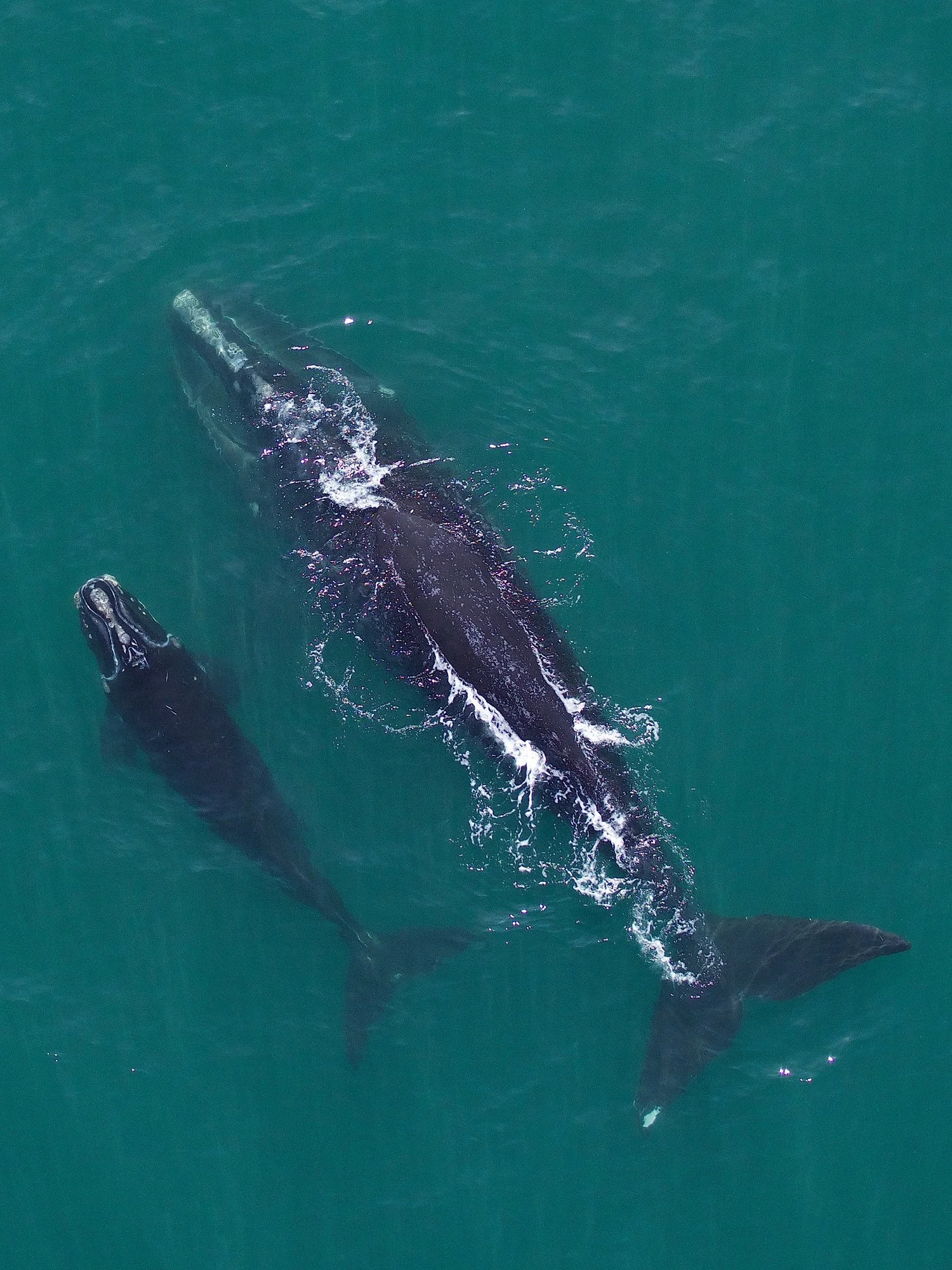SR3’s Research Highlights the Plight of Critically Endangered North Atlantic Right Whales
We don’t just study whales off our Pacific coast. SR3’s collaborative research is also helping to understand the challenges critically endangered North Atlantic right whales (NARWs) are facing. Using measurements of aerial photographs of NARWs in Cape Cod Bay, collected over two decades from airplanes and drones, our new publication has demonstrated that larger females have more calves. This is a problem because we have also found that NARWs are growing to smaller adult body lengths in recent years. This new paper, published today in the journal Marine Ecology Progress Series, is the result of collaborative research between SR3’s Dr. Holly Fearnbach, Dr. John Durban and colleagues from NOAA’s Southwest Fisheries Science Center, New England Aquarium and Woods Hole Oceanographic Institution. NARWs currently number less than 400 individuals, and declines in both abundance and body size have been linked to impacts from vessel strikes and entanglements in fishing gear, as well as changes in both the abundance and availability of their copepod prey. The new results show that reproductive females with larger body size had shorter inter-birth intervals, produced more calves per potential reproductive year and produced more calves over longer reproductive life spans. This provides evidence that recent trends in declining body size are likely contributing to the observed low birth rates over the past decade, which is a cause for concern for this critically endangered population. Conservation management aimed at reducing these human impacts are imperative for the recovery of this population.
An adult North Atlantic right whale mother that brought her young calf from the calving grounds off the coast of Florida and Georgia to coastal waters of Cape Cod Bay in April 2016. Image taken with a drone at non-invasive altitude of at least 130ft above the whales, under NMFS research permit # 17355. Photo by John Durban and Holly Fearnbach, SR3.

